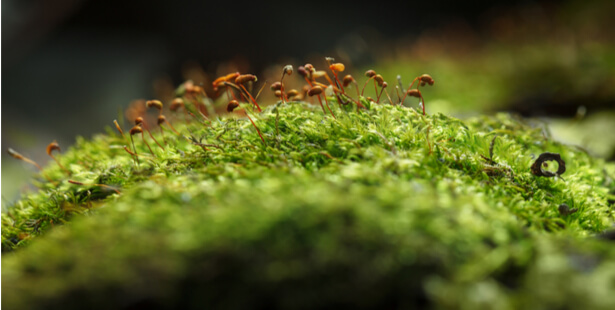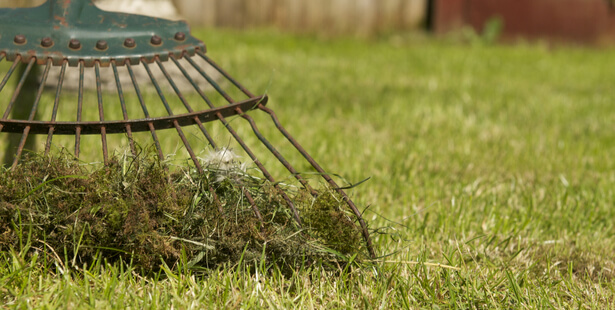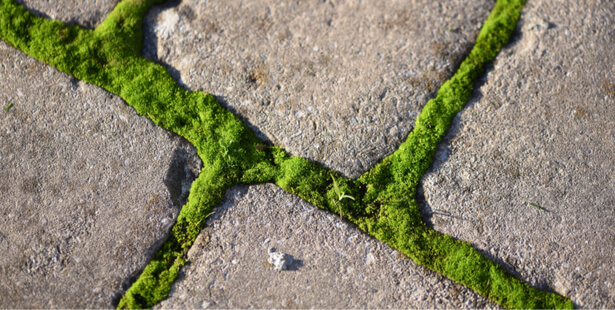Moss appears naturally in the lawn. If this bothers you, here are some practical tips to fight against this phenomenon.
If you have a beautiful lawn, you will certainly not like to see it invaded by moss. Forget about aggressive phytosanitary products and choose a natural anti-moss product. Adopt these practical rules against moss.
Natural moss control for your lawn: live in peace in your organic garden
To fight against moss, which is mainly an aesthetic enemy, you must understand what it is. It is a rhizoid plant, which means that it does not have classical roots, but rhizomes.
Get to know your “enemy
Good news for us: this means that it does not have deep roots in the soil. Nor does it have a flower to speak of. Although the untrained eye cannot distinguish between them, there are nearly 20,000 different species of moss.
The variety of species and the fact that they can multiply either by sexual reproduction with a spore or by division of a cell means that it can be found almost everywhere, on trees, stones, the ground, in the forest, at the water’s edge and of course in your garden.
It is difficult to eliminate moss completely because it feeds on water and the goal is certainly not to deprive your garden of it, especially since it can wait a long time if it does not find any and come back to life as soon as water occurs, in the humidity of the air or the rain. It grows on a support but it feeds on invertebrates.

We will therefore prefer alternative methods: not to eliminate all moss but to try to maintain conditions that do not favor it too much. In short, use nature and not fight against it because if there is moss in your garden, it is because the environment is favorable to it.
Contents
The #1 method not to follow: copper against moss
Copper sulfate has often been a solution against moss, since copper kills it. The major problem with this method is that copper sulfate will inevitably affect the rest of the garden and attack other plants and especially the soil.
To fight against moss and fungus, many people use the famous Bordeaux mixture, a mixture of lime and copper sulfate, which has been widely controversial since then, even though the copper sulfate is still allowed in organic farming.
You can use a little but the level of copper in the soil should not be too high. Therefore, avoid runoff to the ground as much as possible. Note: copper will tend to acidify the soil and thus potentially make the situation worse.
What not to do #2: cut your lawn short
A lawn that is too short is a bad idea for several reasons. Mowing your lawn too often and too short is an ecological aberration and, if it is not essential, this simple gesture will even have a negative impact on your garden.
Don’t cut the lawn too short to avoid moss growth –

The lawn will be weakened and this will make room for moss, which tends to invade the available spaces. It is therefore better to keep a medium cut and maintain the lawn regularly. You can sow grass if certain areas are too sparse.
Note that in addition to getting rid of moss, letting the grass grow a little taller will also prevent the appearance of many “wild grasses” such as dandelions!
Recommended natural anti-moss method #1: work on the pH of the soil against moss
To eliminate moss, or at least prevent it from proliferating too much, you need to know your soil better to understand why moss likes it so much. To do this properly, try to find out the pH of the soil.
An acidic soil is particularly appreciated by ferns but also by mosses.
There are several solutions: if an acidic soil is suitable for growing crops, because it will be good for the plants you want to grow, the risk of moss appearing will be greater. If an acidic soil is not particularly necessary, then a lime or fireplace ash amendment can be added to raise the pH. Lawns appreciate the potash in the ashes.
Recommended method #2: a well nourished and drained soil against moss in the garden
If moss likes water, it also likes poor soil, which is not good for the lawn.
So we will feed the soil to keep the lawn healthy. Do not hesitate to add compost and amendments rich in nitrogen and minerals – potassium and phosphorus in particular -, all organic but not in excess, otherwise your lawn could be challenged by other more competitive plants.
natural moss control
Moss grows naturally everywhere in nature, especially on trees
Aerate the lawn and the soil against moss
If the soil is heavy, we will drain it, or even add sand. Once or several times a year, we will scarify the lawn to eliminate superficial rhizomes and aerate the soil with adapted shoes or a lawn drill.
As a last resort, instead of using a natural anti-moss product, make peace with moss!
Uses even in the home
In the past, foam was used to insulate or fill mattresses, whereas nowadays synthetic foams or other more suitable materials are more commonly used. However, foam is still used today for certain purposes, especially because of its branching and species adaptation properties, for example to fix dunes or to clean up polluted marshes.
This will not necessarily concern you in the garden, unless you have a pond.
Think about it: accept moss in the garden too
As you can see, it is difficult to completely eliminate moss, as it can easily grow in the garden. Moss has a concrete use in the organic garden, so avoid destroying it completely: it contributes to the balance of the garden.
Moss will be useful for moths, to build nests or to shelter food for birds. In a basin, a pond, a stream, it will accumulate pollution and release clean water. In dry areas such as the tundra, it will also be useful after a fire and participate in the ecological resilience of ecosystems.
In some cases, the moss will degrade into humus and then peat.
natural anti-foam
Moss is part of the balance of nature, so it should not be totally eliminated
Keep a corner of moss
For all these reasons, we advise you not to try to remove all the moss. Remove it when it is really disturbing your property but try to preserve a corner, perhaps with other plants, a sort of island of nature in the wild, to help biodiversity. Birds and insects will thus have their corner of nature preserved.
And to eliminate it in other parts of your lawn, here are 4 methods analyzed for their merits and demerits.
Uses for moss in the garden

You can use moss yourself in your garden. Rather than trying to remove it, you can encourage it and make it an ornamental carpet: you don’t have to mow it. Generally, “weeds” (you know, what we sometimes call “weeds”) don’t try to get in.
The moss can also be used in compost or, once collected, put at the base of young trees to serve as a ground cover.

